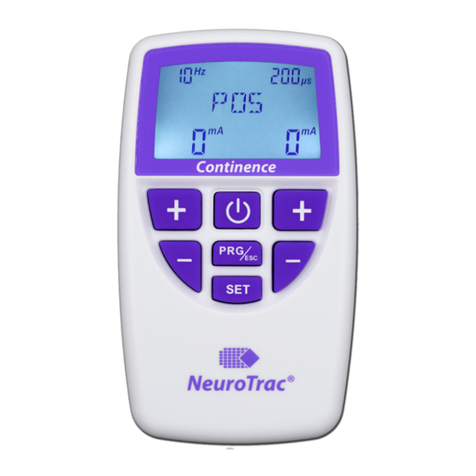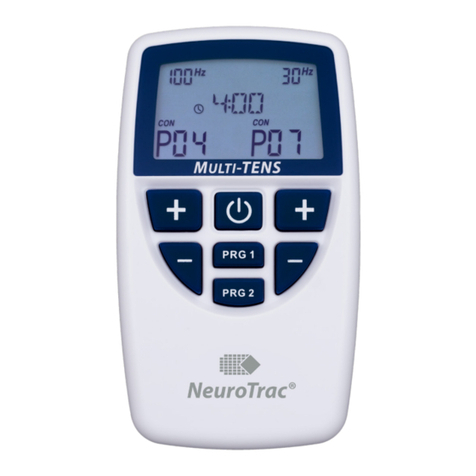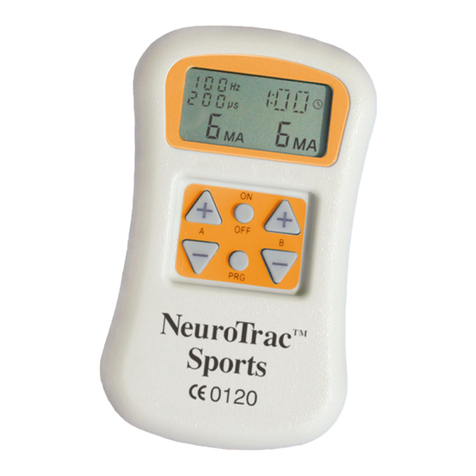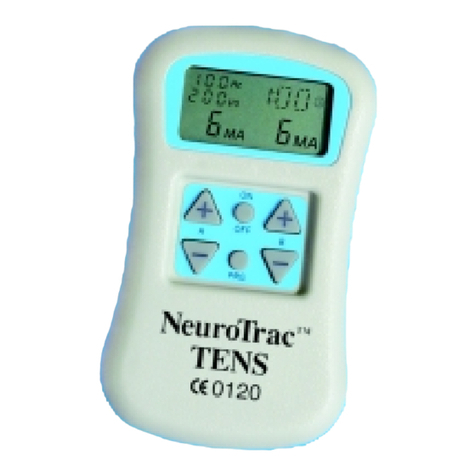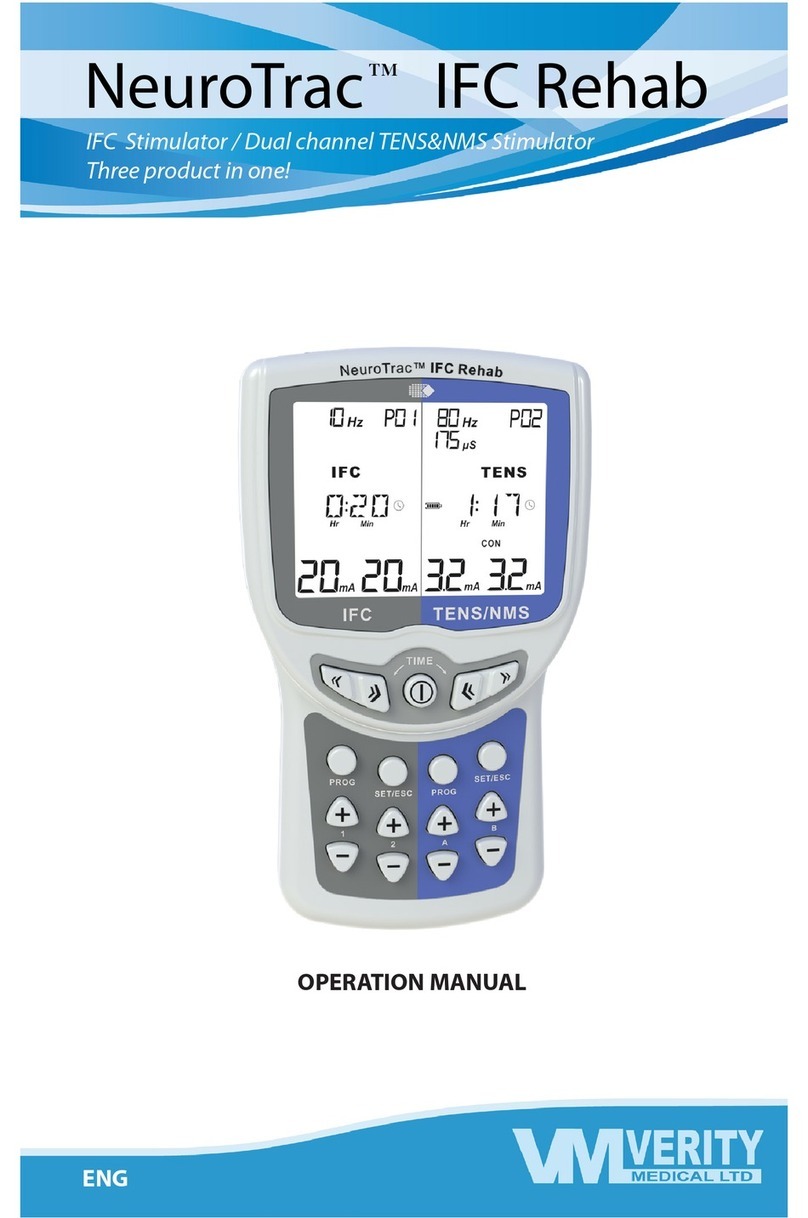
NeuroTrac® Sports XL Operation Manual
32
Table 204: Guidance and manufacturer’s declaration
– electromagnetic immunity
The NeuroTrac® product is intended for use in the electromagnetic environment
specifi ed below. The customer or the user of the NeuroTrac® product should assure
that it is used in such an environment.
Immunity
test
IEC 60601
test level
Compliance
level
Electromagnetic environment
guidance
Conducted RF
IEC 61000-4-6
Radiated RF
IEC 61000-4-3
3 Vrms
150 kHz to
80 MHz
3 V/m
80 MHz to
2,5 GHz
3 Vrms
150 kHz to 80
MHz
3 V/m
80 MHz to 2,5
GHz
Portable and mobile RF communications
equipment should be used no closer
to any part of the NeuroTrac®product,
including cables, than the recommended
separation distance calculated from the
equation applicable to the frequency of
the transmitter.
Recommended separation distance
d = 1.2 √P 150 kHz to 80 MHz,
d = 1.2 √P 80 MHz to 800 MHz
d = 2.3 √P 800 MHz to 2.5GHz
where P is the maximum output power
rating of the transmitter in watts (W)
according to the transmitter manufacturer
and d is the recommended separation
distance in meters (m).
Field strengths from fi xed RF transmitters,
as determined by an electromagnetic site
survey a , should be less than the compli-
ance level in each frequency range b.
Interference may occur in the vicinity of
equipment marked
with the following
symbol:
NOTE 1 At 80 MHz and 800 MHz, the higher frequency range applies.
NOTE 2 These guidelines may not apply in all situations. Electromagnetic propagation is
aff ected by absorption and refl ection from structures, objects and people.
a Field strengths from fi xed transmitters, such as base stations for radio (cellular/cordless)
telephones and land mobile radios, amateur radio, AM and FM radio broadcast and TV
broadcast cannot be predicted theoretically with accuracy. To assess the electromagnetic en-
vironment due to fi xed RF transmitters, an electromagnetic site survey should be considered.
If the measured fi eld strength in the location in which NeuroTrac® product is used exceeds
the applicable RF compliance level above, the NeuroTrac® product should be observed to
verify normal operation. If abnormal performance is observed, additional measures may be
necessary, such as reorienting or relocating the NeuroTrac® product.
b Over the frequency range 150 kHz to 80 MHz, fi eld strengths should be less than 3 V/m.
NeuroTrac® Sports XL Operation Manual
5
Neuromuscular Stimulation has been used for many years to stimulate muscle
and nerve bres to treat a number of muscle and nerve related conditions. Over
the last 30 years numerous clinical trials and papers have been written.
The NeuroTrac®Sports XL is one of a new breed of modern neuromuscular
stimulators which Verity Medical have developed with the Therapist and Pa-
tient in mind. Our principle aim is to design products that have high levels of
functional use, are sensibly priced, compact and user friendly.
The NeuroTrac®Sports XL is a dual channel device (with 2 lead wires for each
channel giving a total of 8 electrode positions) combining several treatment
programmes into one unit. Neuromuscular Stimulation is increasingly under-
stood by Therapists and Doctors. There is a better understanding of the mecha-
nisms which exist between nerves and muscles that make it possible to stimu-
late the neuromuscular system with precise electrical signals. The NeuroTrac®
Sports XL offers precision giving full control of Pulse Widths, Rates, Ramp up
times, Work / Rest cycles as well as alternating or synchronous application if
two channels are being applied.
Customer Care
We welcome constructive comments regarding our equipment particularly
those that might help us to improve existing features, add new ones or develop
new products for the future.
What is STIM?
